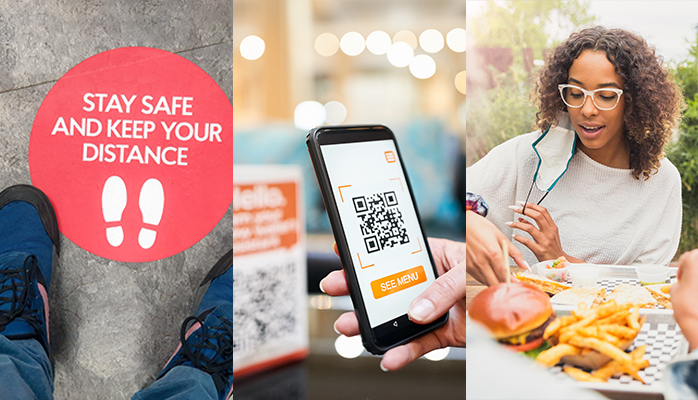It's no secret that the COVID-19 pandemic of 2020-2021 has changed pretty much everything to some degree. How we all work, socialize, shop, play, pray, learn, travel and more have been altered. In some cases, we may never go back to "normal" again. Business models unheard of just 18 months ago are now commonplace, while certain time-worn ways of conducting business suddenly seem hopelessly out of touch. For example, let’s take a look at Conference Centers in the Age of Coronavirus.
Few business sectors have been impacted as significantly as the meeting and events industry. Allied Marketing Research valued the event industry at more than $1.1 billion in 2019 and projected it to grow at a compound rate of 11.2% to nearly $1.6 billion by 2028. The most promising sub-segments were expected to include corporate events and seminars. All signs pointed to a bright future for conference centers nationwide.
And then, coronavirus. According to Meeting Professional International and Event MB, 96% of event professionals surveyed in mid-2020 had already experienced cancellations. This figure likely approached 100% by year-end. Cancellations and lost revenue aside, the coronavirus has also changed how we think about “events” in profound – and likely permanent – ways.
How has coronavirus has changed the event industry?
RX Global surveyed nearly 3,000 exhibitors and more than 9,000 event attendees across 201 different events to answer that very question. Their findings should be required reading for anyone who relies on, markets to or supports the meeting and events industry in some way:
COVID-19 is changing consumer behavior
At the time of the survey, 84% of event attendees and exhibitors had tried at least one new digital communication service since the pandemic locked everything down.
Consumers are adopting online tools due to COVID-19
By late 2020, 94% of event attendees expressed a willingness to attend online virtual events in lieu of physical, in-person events.
Exhibitors are more cautious about online tools than attendees
Interestingly, only 43% of exhibitors surveyed believe they can fulfill most of their event objectives through online delivery. The primary concern is that attendees will not engage in digital events. If attendees’ responses are to be believed, the data does not support this concern.
Digital meetings and events will continue after COVID-19
Fully 65% of attendees and 57% of exhibitors believe digital/online methods of holding events will continue to be embraced after the risk of COVID-19 subsides.
How can conference centers adapt to COVID-19?
Clearly, the meeting and events industry as a whole has undergone profound levels of change in a short period due to the coronavirus. But what does all this mean for those who provide the physical space for meetings and events – the owners and operators of the conference centers themselves?
We looked at the trends noted above as well as guidelines provided by the Centers for Disease Control and Prevention. It’s our belief that conference centers should remember these three tips if they wish to succeed in the Age of Coronavirus.

Tip #1: Social distancing is here for a while
Health officials in England recently noted that social distancing and face coverings might be necessary – at least intermittently – for several years to come. COVID-19 and its variants will likely ping pong between vaccinated and unvaccinated populations around the globe. We may see requirements to periodically reinforce such public health measures to “tamp down” the coronavirus.
For conference centers, this means not letting your guard down on social distancing measures. It may still be prudent to use such traffic control tools as social distancing floor decals and stanchion signs months and even years into the future. Metering systems that control the density of a crowd (think stoplights at conference center entrances) should also be considered. Anything you can do to reduce the risk of creating “super spreader” conditions will increase the likelihood that events will happen as scheduled. It will also increase the comfort level of exhibitors and attendees alike.
Tip #2: Make digital tools easy for exhibitors and attendees
Contactless marketing is a thing, and it's also likely here to stay. Exhibitors are increasingly replacing paper collateral with digital methods of sharing information. Conference centers should do likewise to stay one step ahead of COVID-19. For example, mobile phones and QR codes are a fast way to admit people to a convention space, without passing paper tickets from hand to hand. App-based “event bots” can take the place of touchscreen kiosks and old-school information booths. Near-field communications technology (NFC) has various applications, from limiting capacity in meeting spaces to replacing the use of paper business cards.
These and other digital technologies will no doubt proliferate. Conference centers must therefore begin to think digital-first about the infrastructure of the meeting space. Will something as simple as electrical outlets become a limiting factor if every exhibitor shifts to digital presentation tools? Does your wireless network have enough bandwidth to handle that much data transfer for that many concurrent users? And what about the acoustics of the space? TV monitors and endlessly looping videos may soon replace human conversation. Will the environment become cacophonous without noise-cancellation or sound-absorption measures?
Tip #3: Explore COVID-friendly catering options
One aspect of the conference center experience – food service – is unlikely to return to “normal” anytime soon. The ubiquitous self-serve buffet line is a non-starter in the Age of Coronavirus. Inviting hundreds of people to handle the same serving utensils – while standing shoulder to shoulder over open steam tables of food – is a bad idea on various levels.
Conference centers need to innovate and embrace COVID-friendly catering practices. For example, provide pre-packaged grab-and-go boxes instead of buffets. Consider a return to the elegance of plated service. Utilize available outdoor spaces to offer a picnic-like environment. Explore creative partnerships with nearby restaurants to offer vouchers for dining off-site. Again, exhibitors and attendees will notice the care being taken to protect their health and feel more at ease during the event.
The conference center’s best friend
Taylor is uniquely positioned as a single-source partner for the communications solutions that conference centers and their exhibitors depend on. Our diverse range of capabilities enables us to enhance the entire meeting and event experience from end to end, including:
- Marketing, data, and analytics services to create mailing lists of high-potential customer prospects.
- Direct mail programs that build excitement for the event and drive attendance.
- Signs and graphics that direct the flow of foot traffic as attendees enter.
- Trade shows and event displays that invite attendees to linger and learn.
- Promotional marketing products for distribution by exhibitors at their booths.
- Corporate identity and branding materials that help exhibitors build lasting relationships, one customer at a time.
We hope this article on Conference Centers in the Age of Coronavirus has been helpful. Be sure to watch the Taylor blog as we explore other common marketing challenges and recommend ways to overcome them.










